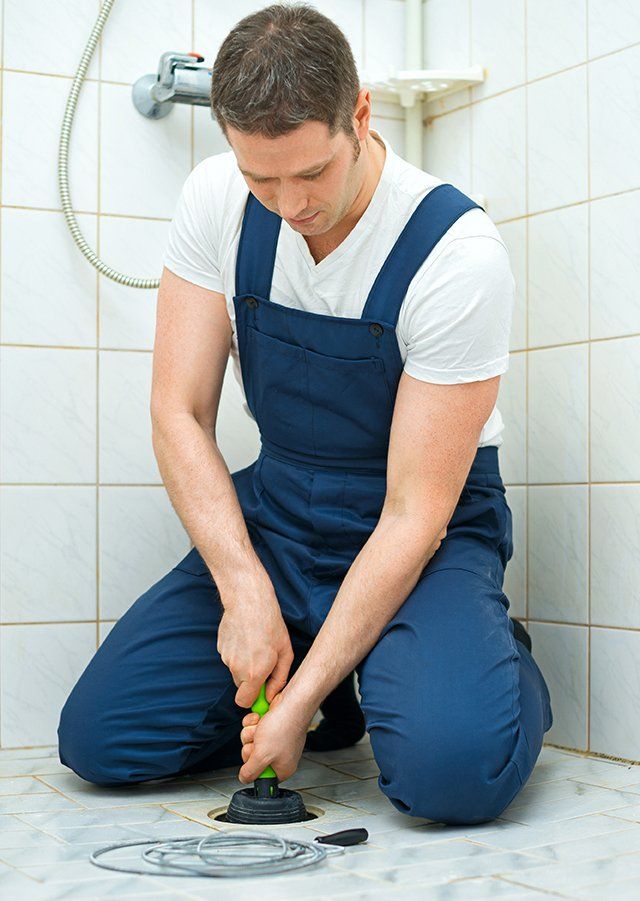
You may be wondering why the water in the toilet bowl won’t go down or has been slowing down and backing up. You might have tried plunging it with no luck. This blog post will show you a few different methods to unclog a toilet when all else fails. If one doesn’t work, try another until you find one that does! With patience and persistence, there’s hope for your problem yet!
Plunging the toilet won’t work
Plunging is one of the most common methods people try when they’re having a slow draining toilet. Using a plunger works because it creates suction to help push the water down the drain and break up any clogs that are in your pipes. If you don’t have success with this method after trying it a few times, it’s best to try other options. Let’s say you have a slow draining toilet and decide to plunge it, but the plunger doesn’t work; what do you do? You can buy a toilet auger that will help remove blockages from your pipes. This tool is shaped like an old-fashioned corkscrew, so it’s basically a plunger on a wire.
Don’t use harsh chemicals, especially if you have a septic tank.
Harsh chemicals can damage your toilet, your septic system, and it could even cause a bigger clog. They can remove the finish from your toilet bowl if you’re not careful when using them. It’s best to use milder or natural solutions first unless you know of no other options. If they don’t work, then try a harsher solution. Be careful when using these chemicals to unclog a toilet. If you’re not sure about what you’re doing, hire a professional to help you out.
Sea salt, baking soda, and vinegar are all great ways to unclog a toilet. Fill the bowl with one of these ingredients and swish it around with a toilet brush. Make sure you use enough until it covers the sides as well as the bottom of the toilet bowl. The natural acids in the vinegar will help dissolve grime build-up. Salt has the same effect, but it also helps to dissolve water deposits and mineral scales that can slow down your toilet. Just be careful with these methods because they won’t damage the inner workings of a toilet or septic tank like chemical solutions will.
Treat your toilet like a garden. Sometimes, the problem could be that you’re not keeping your toilet bowl clean enough. Over time, things such as hair and food particles can build up in there. You don’t want to remove everything from it every time you go to the bathroom, but you should make sure it’s looked over once a week. Look for things like limescale deposits and grime build-up to see if you need to scrub it out with a toilet brush.
Clean your toilet more frequently. If you have a septic tank, then it helps if you can keep the bowl clean by cleaning it at least once every 2 weeks. That way, things like hair and food won’t build up in there as much. Make sure that when you’re putting materials inside the toilet bowl, they don’t get stuck.
If you have a slow-running toilet, then it’s probably because the flapper is broken. This is a plastic piece that hangs over the opening of your toilet tank and seals it when you flush it. If this part broke or fell off, then the water will pretty much run non-stop until someone fixes it. Replace the flapper by taking off the tank lid and then unscrewing it from inside. You can purchase a new flapper at any home improvement store.
Cleaning your toilet bowl with vinegar once a month is a good way to keep limescale deposits from building up. It also helps to prevent rust and mineral buildup, as well as character build-up and grime. Make sure you pour enough in there to cover the bottom and sides of your bowl, then scrub it down with a toilet brush.

Use a plunger to create suction and force water down the drain.
This is the easiest and cheapest way to unclog a toilet. It can work and be successful in certain scenarios, but it also has its limitations: plunging only works when enough water can get through the blockage before it fills up to the top. A toilet plunger is just like a plunger you’d use for clogged drains.
If you try to plunge your toilet and it has already filled up completely, plunging will not work (usually). There is just too much water in the bowl for a plunger to create enough of the suction needed to break through a clog. A plunger can also get some pretty gross gunk all over it if you are trying to unblock a toilet with a clog that has already filled up once before.
Plunging can be helpful if you have water draining slowly from the overflow tube, or if you know the problem is not at the bottom of your toilet bowl. If plunging is used correctly and isn’t overused, it can help keep your toilet draining properly. But mostly, it should be used as a last resort. Plunging should only be done to clear a clog if there is a partial blockage, and your toilet bowl isn’t already completely full of water.
Run your bathtub’s hot water for a few minutes then pour it into the toilet bowl with some dish soap or other type of cleaner that is meant for clogs.
This is one of the most popular methods to clear clogs in toilets but it doesn’t always work. You can also mix some hot water and bleach together and pour that into your toilet bowl. The combination of both liquids may be capable of breaking down some clogs you have, however, this would only be used on very simple ones not involving paper.
The way you flush your toilet is very important because if your down the drain is a bit clogged then this can cause damage to your toilet and even result in it breaking. A good way to know which flush method is best for you when you are dealing with a clog would be to run water through the drains in your bathtub before using the toilet. This way you can figure out which flush method is best for your situation and avoid damage to either yourself or your property.
When washing clothes or doing dishes it is very important that if you hear a gurgling sound from your pipes then get someone to check them as they could be clogged and might need to be unclogged.
If you have a drain that is connected to the wall then it is important to make sure that when washing your hands in the sink or using other items that connect with the plumbing such as a hairdryer that you do not push down on the plug or handle. When they are pushed down hard enough, even for just an instant, it can cause the drain to clog and result in a very hard time trying to unclog them.
If you are trying to unclog your sink drain, it is important that you do not pour chemicals down it such as bleach. This can result in very severe damage to the pipes and then will require a lot of time and money to fix. A simple way to clear a clogged sink would be to fill it with boiling water and then run cold water down it after. This should be enough to clear the clog but if not then you can proceed with using chemicals.
If none of these methods work, call a professional plumber who can fix your problem!
Unclogging a toilet is pretty easy but sometimes there can be more serious issues that arise which may need to be dealt with by professionals. If your toilet has been clogged for several days and the above methods have not worked, then you should call someone who will be able to assess your plumbing situation and clear it without charging too much. It is not recommended to wait for too long before you seek help because a clogged toilet can cause permanent damage if left alone.
If you are having trouble with your plumbing or need some advice on how to fix something, ask us! We would be glad to assist you!




